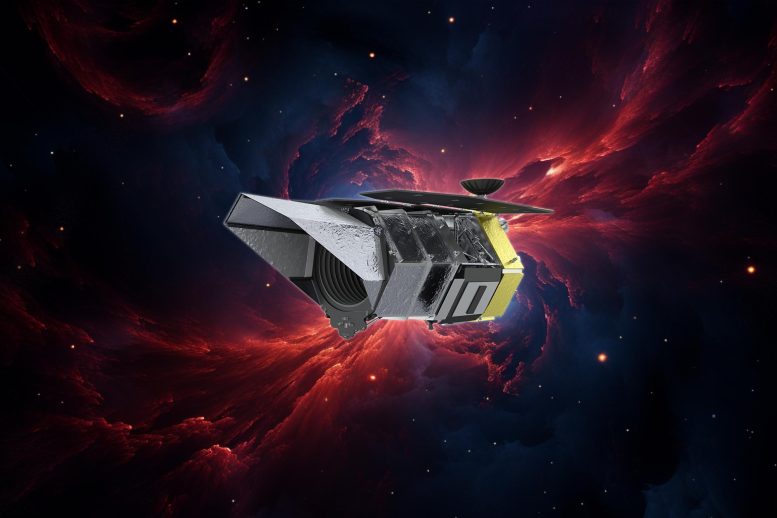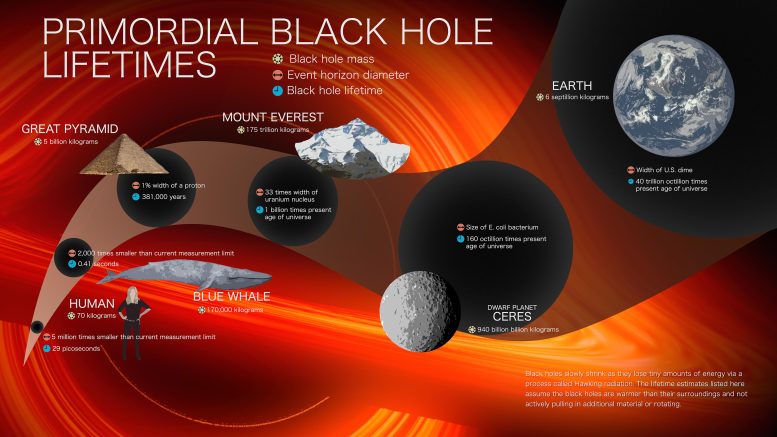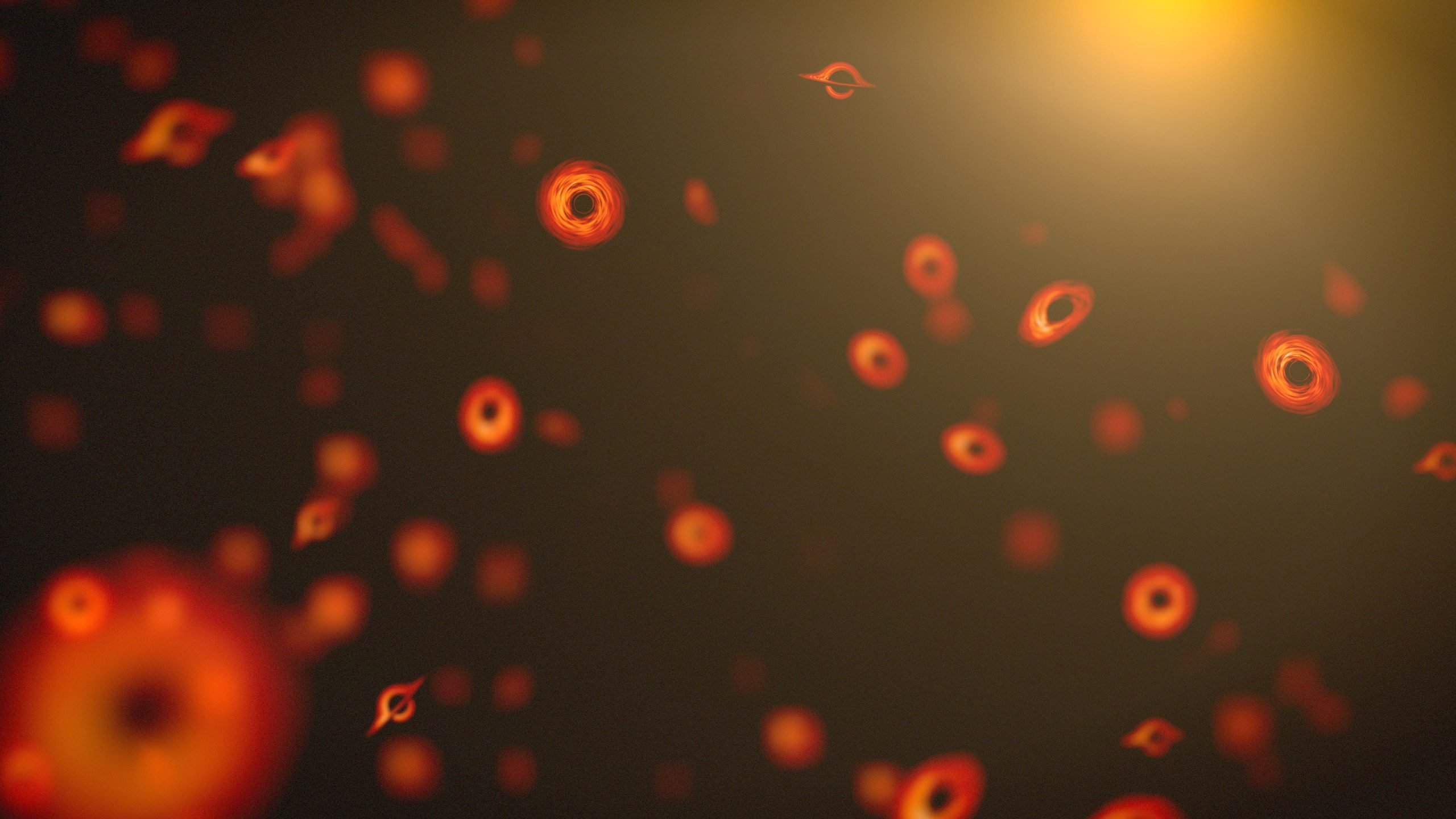The upcoming Roman Space Telescope may unveil a new class of “featherweight” black holes, challenging existing theories of black hole formation. These Earth-mass black holes, if found, could have significant implications for our knowledge of the early universe and the nature of dark matter. Credit: NASA’s Goddard Space Flight Center
A paper describing the results has been published in the journal 
Discovering Earth-mass primordial black holes with NASA’s Roman Space Telescope could transform our understanding of the universe and dark matter. Credit: NASA’s Goddard Space Flight Center
Primordial Black Hole Recipe
The smallest black holes that form nowadays are born when a massive star runs out of fuel. Its outward pressure wanes as nuclear fusion dies down, so inward gravitational pull wins the tug-of-war. The star contracts and may get so dense it becomes a 
Stephen Hawking theorized that black holes can slowly shrink as radiation escapes. The slow leak of what’s now known as Hawking radiation would, over time, cause the black hole to simply evaporate. This infographic shows the estimated lifetimes and event horizon –– the point past which infalling objects can’t escape a black hole’s gravitational grip –– diameters for black holes of various small masses. Credit: NASA’s Goddard Space Flight Center
Hints of Hidden Homesteaders
Observations have already revealed clues that such objects may be lurking in our galaxy. Primordial black holes would be invisible, but wrinkles in space-time have helped round up some possible suspects.
Microlensing is an observational effect that occurs because the presence of mass warps the fabric of space-time, like the imprint a bowling ball makes when set on a trampoline. Any time an intervening object appears to drift near a background star from our vantage point, the star’s light must traverse the warped space-time around the object. If the alignment is especially close, the object can act like a natural lens, focusing and amplifying the background star’s light.
Separate groups of astronomers using data from MOA (Microlensing Observations in Astrophysics) – a collaboration that conducts microlensing observations using the Mount John University Observatory in New Zealand –– and OGLE (the Optical Gravitational Lensing Experiment) have found an unexpectedly large population of isolated Earth-mass objects.
Planet formation and evolution theories predict certain masses and abundances of rogue planets – worlds roaming the galaxy untethered to a star. The MOA and OGLE observations suggest there are more Earth-mass objects drifting through the galaxy than models predict.
This artist’s concept takes a fanciful approach to imagining small primordial black holes. In reality, such tiny black holes would have a difficult time forming the accretion disks that make them visible here. Credit: NASA’s Goddard Space Flight Center
“There’s no way to tell between Earth-mass black holes and rogue planets on a case-by-case basis,” DeRocco said. But scientists expect Roman to find 10 times as many objects in this mass range than ground-based telescopes. “Roman will be extremely powerful in differentiating between the two statistically.”
DeRocco led an effort to determine how many rogue planets should be in that mass range, and how many primordial black holes Roman could discern amongst them.
Finding primordial black holes would reveal new information about the very early universe, and would strongly suggest that an early period of inflation did indeed occur. It could also explain a small percentage of the mysterious dark matter scientists say makes up the bulk of our universe’s mass, but have so far been unable to identify.
“This is an exciting example of something extra scientists could do with data Roman is already going to get as it searches for planets,” Sahu said. “And the results are interesting whether or not scientists find evidence that Earth-mass black holes exist. It would strengthen our understanding of the universe in either case.”
Reference: “Revealing terrestrial-mass primordial black holes with the Nancy Grace Roman Space Telescope” by William DeRocco, Evan Frangipane, Nick Hamer, Stefano Profumo and Nolan Smyth, 8 January 2024, Physical Review D.
DOI: 10.1103/PhysRevD.109.023013
The Nancy Grace Roman Space Telescope is managed at NASA’s Goddard Space Flight Center in Greenbelt, Maryland, with participation by NASA’s Jet Propulsion Laboratory and Caltech/IPAC in Southern California, the Space Telescope Science Institute in Baltimore, and a science team comprising scientists from various research institutions. The primary industrial partners are BAE Systems, Inc in Boulder, Colorado; L3Harris Technologies in Rochester, New York; and Teledyne Scientific & Imaging in Thousand Oaks, California.
















.jpg?itok=F2C4uk0x)




Discussion about this post